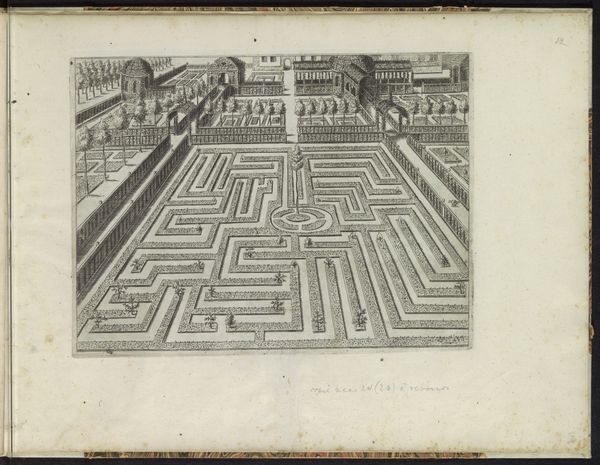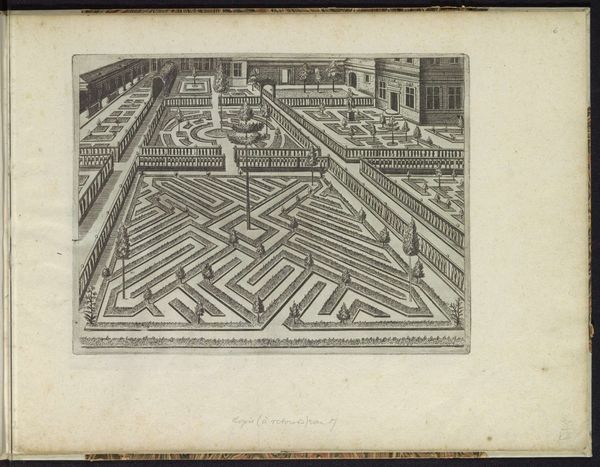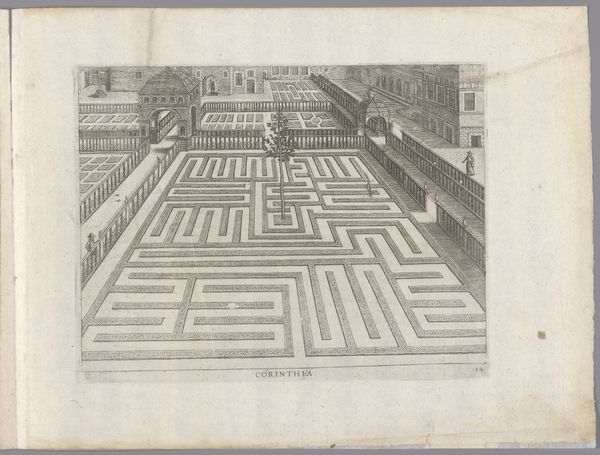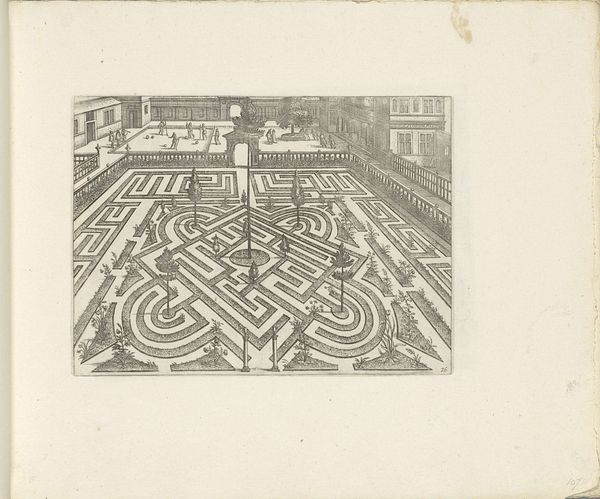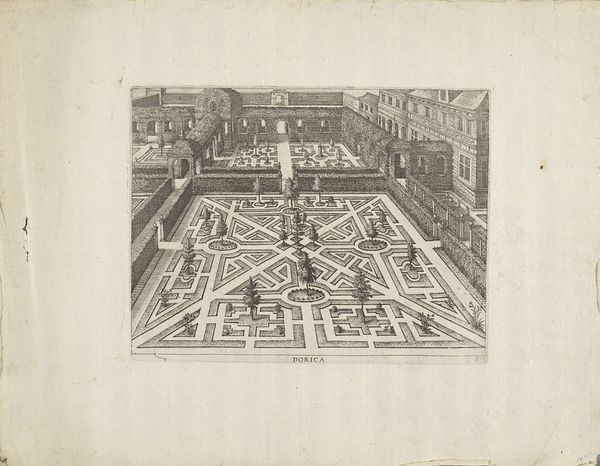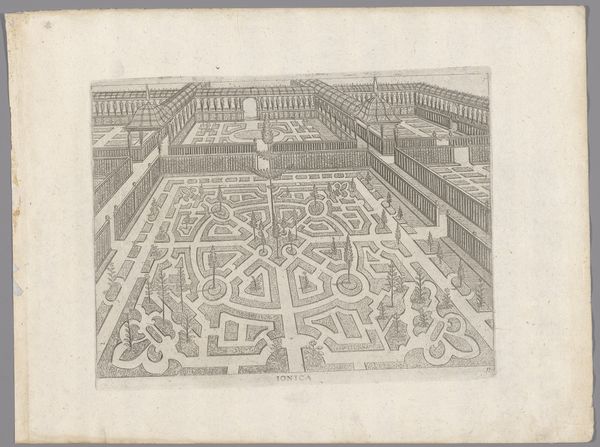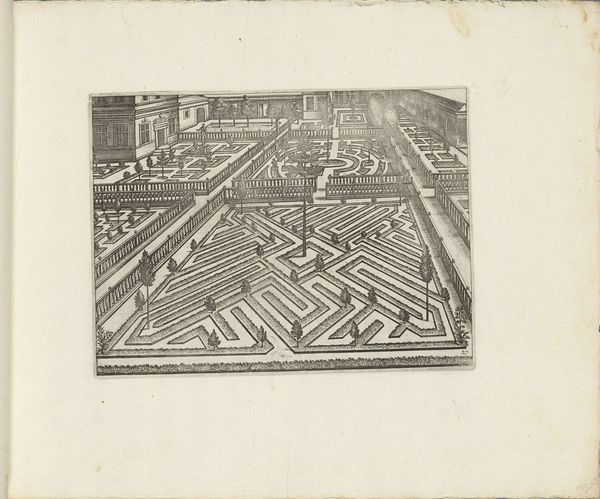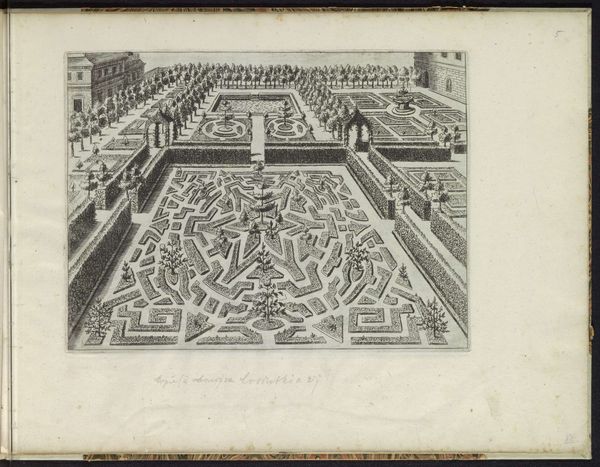
print, engraving
#
baroque
# print
#
landscape
#
perspective
#
geometric
#
line
#
engraving
Dimensions: height 189 mm, width 246 mm
Copyright: Rijks Museum: Open Domain
Curator: What a fascinating print. It's titled "Tuin met geometrische parterre en kolfspelers," or "Garden with Geometric Parterre and Kolf Players" created around 1615 by an anonymous artist. Editor: My first impression is of this incredibly ordered yet somewhat claustrophobic space. The high angle gives a clear view of the geometrically intricate parterre, creating a stark contrast with the open playing field in the back. Curator: Absolutely, that deliberate contrast speaks volumes about the societal role of leisure. Formal gardens like this weren't merely for strolling; they projected power and control. Note the kolf players – engaging in what was essentially an aristocratic version of golf. Their presence signals this as a privileged space, carefully managed and enjoyed by the elite. Editor: I'm struck by how the use of line dictates our experience. The precise engraving technique emphasizes the structure, creating this almost overwhelming sense of order and rational design. Curator: It reflects the Baroque obsession with taming nature, imposing human will upon it. These manicured gardens became stages for displays of wealth and refinement, shaping social interactions. One must be cautious about the limitations inherent in the black-and-white medium; no doubt the plants themselves held a variety of textures and colors in real life. Editor: Precisely! It's a very planned perspective. You can clearly identify the use of a vanishing point, which allows for a strong perspectival line. That is only broken with a couple of seemingly out-of-scale elements, drawing the eye to specific areas. Curator: That visual control had a performative dimension. Garden design was deeply intertwined with political performance, influencing social relations within and beyond its confines. Editor: Looking closely, one sees a subtle yet distinct movement conveyed via diagonal lines cutting through static squares of foliage. An attempt, however minute, at breaking the monotony of orthogonal lines? Curator: Perhaps a minor rebellion against the dominant order. It is hard to read the mind of the maker all these centuries later. Editor: In conclusion, I appreciate the technical prowess in depicting such precise geometries in this composition. Curator: And I am struck once more at how these visual landscapes served as potent statements about power, social order and privilege.
Comments
No comments
Be the first to comment and join the conversation on the ultimate creative platform.

